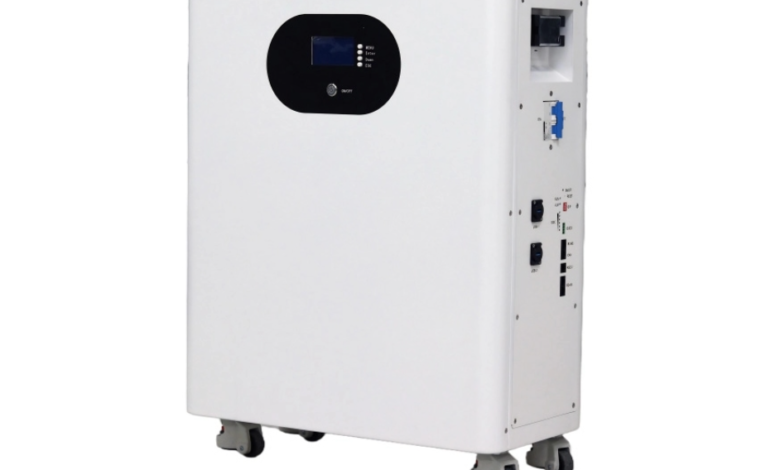How does temperature affect the performance of Lithium Ion Solar Batteries?

As a manufacturer of lithium ion solar batteries, we understand that ambient and operating temperatures have a profound impact on cell efficiency, lifespan, and safety. Whether you are specifying a 15 kWh battery storage solution for a residential PV system or designing grid-scale energy reserves, temperature has a significant impact on everything from charge acceptance to internal chemical stability.
Capacity and Low Temperature Effects of Lithium Ion Solar Batteries
At low temperatures, the electrochemical kinetics of lithium ion solar batteries degrade, resulting in a decrease in capacity and power output. For example, at 0°C, a typical LiFePO₄ module may deliver only 70% to 80% of its rated capacity, while higher energy chemistries, such as NMC, experience even greater capacity drops. Electrolyte viscosity increases at low temperatures, reducing ion mobility and increasing the cell’s internal resistance. As a result, the solar-charged battery attempts to accept current but bounces off the voltage cutoff prematurely, rendering the stored energy unusable.
To mitigate losses due to cold weather, we incorporate active thermal management systems. A simple solution is to include a resistive heater in the battery cell to heat it to the optimal operating temperature range (15-25°C) before charging, which is crucial for 15 kWh battery energy storage units installed outdoors or in unregulated garages. Additionally, an intelligent battery management system monitors the temperature sensors within each module to prevent charging at sub-zero temperatures, thereby avoiding lithium plating, which permanently reduces battery capacity.
Charge Acceptance of Lithium Ion Solar batteries at High Temperatures.
In contrast, high temperatures above 40°C present a different set of challenges for lithium-ion solar batteries. Increased battery temperature accelerates electrode reactions, initially improving charge acceptance and reducing internal resistance. However, continued high-temperature operation significantly accelerates side reactions, such as electrolyte decomposition and breakdown of the anode solid electrolyte interface layer. Over time, this results in accelerated capacity decay and a shortened cycle life.
To cope with thermal stress, advanced 15 kWh battery energy storage systems utilize liquid cooling loops or forced-air cooled heat exchangers. Liquid-cooled modules circulate a glycol-water mixture through cold plates bonded to the cells, absorbing heat during intensive charge and discharge cycles. When module temperature exceeds a safe threshold, intelligent BMS algorithms limit charging current, trading short-term power for long-term durability.
See also: How Workers’ Compensation Protects Employees and Employers Alike
Self-discharge and standby thermal losses
Li-ion solar cells self-discharge even when not actively cycled, with the rate rising dramatically in warm environments. At 25°C, a typical lithium iron phosphate battery has a monthly self-discharge rate of 3-5%, while at 40°C, that rate can double. For PV systems that use battery reserves to cope with days of low insolation, excessive self-discharge rates can reduce the state of charge, requiring additional solar generation to restore capacity.
Effective packaging and container design are critical. BARANA’s modular battery racks feature ventilated enclosures and use phase-change insulation to buffer sudden temperature fluctuations. Additionally, the integrated battery management system enters a sleep mode during extended periods of inactivity, disconnecting the battery pack from the main bus to prevent parasitic currents. By minimizing thermal acceleration of self-discharge, lithium-ion solar cells can retain stored energy longer, improving reliability for off-grid and grid-support applications in hot climates.
Differential Aging and Thermal Gradients
In large 15 kWh battery packs, temperature uniformity across modules is critical. Thermal gradients can cause differential aging, with hotter modules degrading more rapidly, thereby dragging down overall pack performance. Without proper design, battery strings within a single string can swing between overuse and underuse, shortening their effective life.
To address this, independent module temperature monitoring and active balancing circuits are employed. Thermally conductive plates and embedded heat pipes even out heat distribution during charge/discharge pulses, while inter-module cooling channels maintain a stable 25-35 °C temperature range. The BMS then dynamically redistributes current, giving preference to cooler modules when a module exceeds 45 °C.
Considerations for Fast Charging Under Thermal Stress
High-rate charging rapidly raises battery temperature, which can cause thermal runaway if not appropriately managed. To enable fast-charging home energy storage systems without compromising safety, manufacturers calibrate multi-step charging profiles and gradually adjust current based on real-time temperature feedback.
For example, a 5C charge rate is allowed only if the module temperature remains below 35°C. Above this threshold, the BMS will transition to a constant-voltage or decreasing-current phase to prevent further heat buildup. Additionally, the use of planar busbars and low impedance connections reduces resistive heating at high currents. These measures enable rapid replenishment of battery reserves, from 30% to 80% SOC in 30 minutes, while limiting thermal excursions to safe operating ranges, safeguarding battery health and user safety.
Mastering Temperature Effects
A comprehensive understanding of the temperature effects on lithium ion solar batteries is crucial for manufacturers, installers, and end-users alike. From cold-related capacity loss and thermally accelerated decay to thermal gradients, self-discharge, and aging dynamics, temperature impacts every aspect of battery performance and lifespan. By leveraging active thermal management, advanced BMS controls, and modular system design, stakeholders can optimize battery storage solutions for residential and commercial solar installations.





